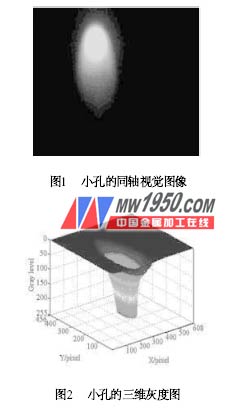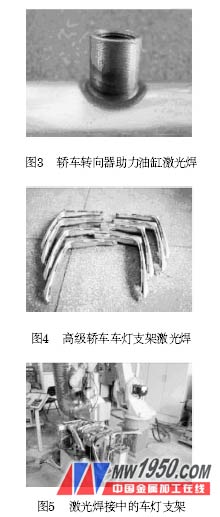Research and application of laser and laser + arc hybrid heat source welding technology
I. Overview Laser welding technology is widely used in aerospace, shipbuilding, vehicle manufacturing and other industrial fields. For the equipment used in high-power laser welding, gas lasers and solid-state lasers are mainly used. Compared with gas lasers, solid-state lasers have a short wavelength, and the light beam can be transmitted through optical fibers. It can be combined with robots and welding machines, and has the characteristics of flexible automation. It is the development direction of welding lasers. Harbin Welding Research Institute is the earliest research institute in China to develop high-power solid-state laser welding technology. In recent years, Harbin Welding Research Institute has followed the international cutting-edge welding technology, focusing on the research and application development of high-power solid-state laser (Nd : YAG) + arc composite heat source welding technology. In order to promote the application of laser and laser + arc hybrid heat source welding technology in China's production field, this paper focuses on the research results and application of laser and laser + arc hybrid heat source welding conducted by Harbin Welding Research Institute. Second, the research and application of laser welding technology In the mid-1990s, Harbin Welding Institute introduced 2K W Nd : YAG solid-state lasers from HAAS, Germany, focusing on the prediction of weld shape (mainly weld penetration) based on neural network laser welding parameters. The research in this aspect can predict the weld penetration according to different laser welding parameters, and at the same time, it can give effective laser welding parameters according to different penetration depths, which has important guiding significance for experimental research and production. In order to monitor the stability of small holes during laser deep-fusion welding, Harbin Welding Research Institute took the lead in researching the coaxial visual sensing technology of Nd : YAG laser welding process in China. Nd: YAG laser welding process coaxial vision sensing system can not only realize the monitoring and research of the small hole state, but also can detect the weld penetration and the penetration of the workpiece based on the monitoring of the small hole shape. The comparison between the measured value and the experimental value of the weld penetration indicates that the detection error of weld penetration is not more than 12% when the workpiece is not welded. The detected value of the weld penetration after the workpiece is penetrated is significantly larger than the thickness of the workpiece. Therefore, the penetration of the workpiece can be detected based on the comparison between the detected value of the weld penetration and the thickness of the workpiece after the workpiece is penetrated. Figure 1 shows a small-hole coaxial visual image captured by a carbon steel material with a laser power of 1200 W and a welding speed of 1.8 m/min. The laser focal length is located on the surface of the workpiece. Figure 2 shows the coaxial visual image of the acquired small hole. Based on the extracted 3D grayscale image. 2. Application of laser welding technology The laser welding technology developed by Harbin Welding Research Institute is mainly used in the civil manufacturing industry. The main applications include automotive gearbox combination gear welding, gearbox gear and shaft welding, and car steering gear booster cylinder welding. See Figure 3) and the welding of the premium car light bracket (see Figure 4). The weld seam of the steering wheel of the car steering gear for the car is a saddle-shaped weld; the weld form of the high-vehicle lamp bracket is a space three-dimensional curved weld. Laser-robot three-dimensional space welding technology makes it easy to weld space three-dimensional welds. Figure 5 shows the premium car light bracket in welding. Next page
1. Research on laser welding technology 
